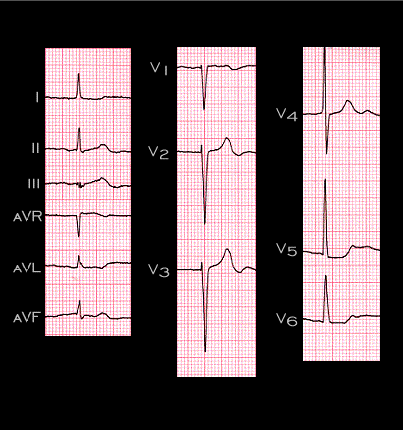
This is the same tracing that was shown on the previous page. It is from an 88 year old female with severe aortic stenosis and atrial fibrillation and demonstrates some features of left ventricular hypertrophy. The S in V1 + the R in V5 = 35mm and the R in aVL + the S in V3 = 28mm. The QRS duration is minimally prolonged (0.10 sec), and there is depression of the ST segment in leads I, V5 and V6. The main QRS axis is normal (+ 30 degrees), the T axis is also within normal limits ( +90 degrees) and the QRS-T angle is at the upper limit of normal (60 degrees). Thus, although the ECG does fulfill several criteria for LVH, the changes are not as dramatic as those seen in the earlier tracings.
